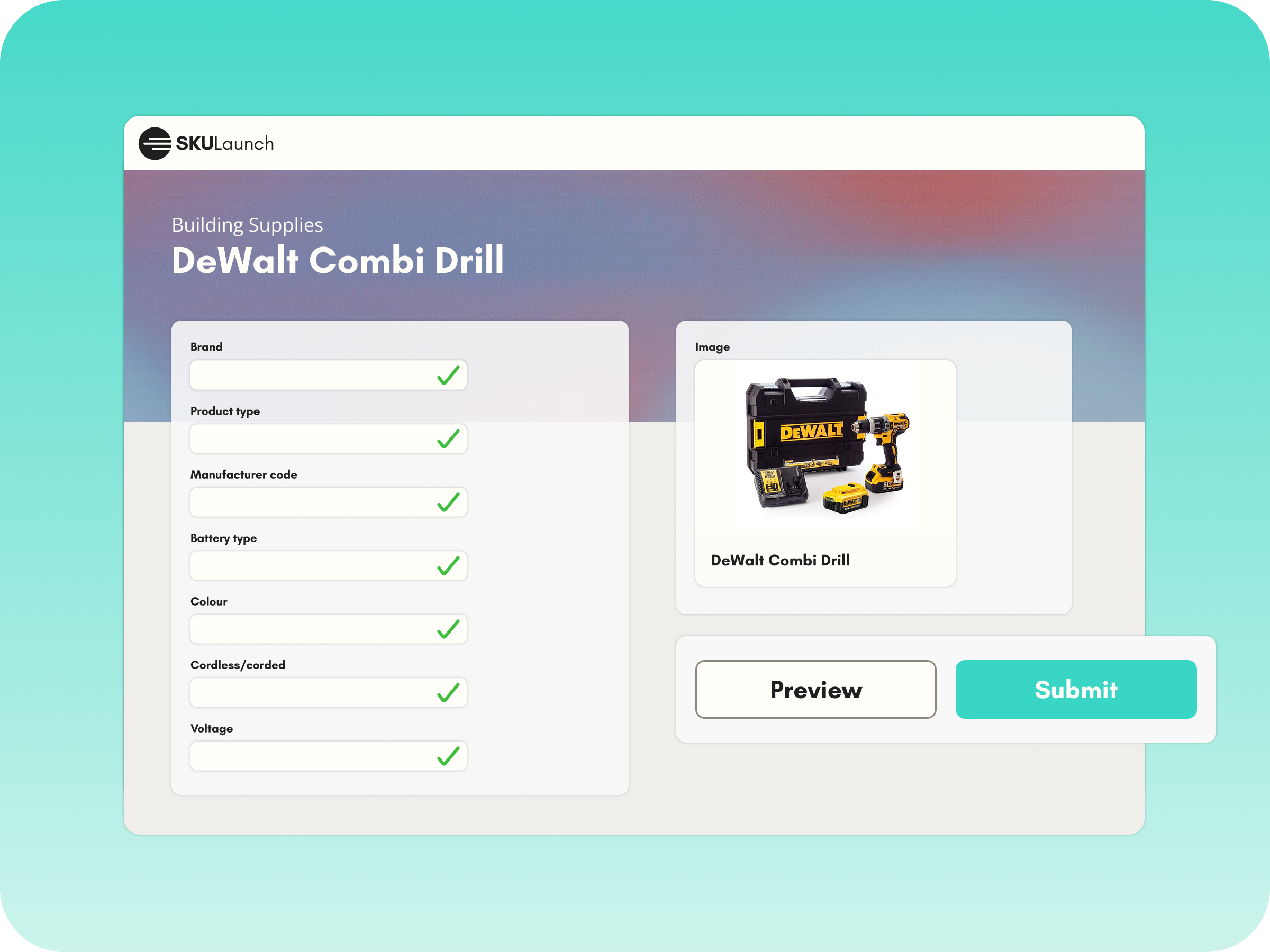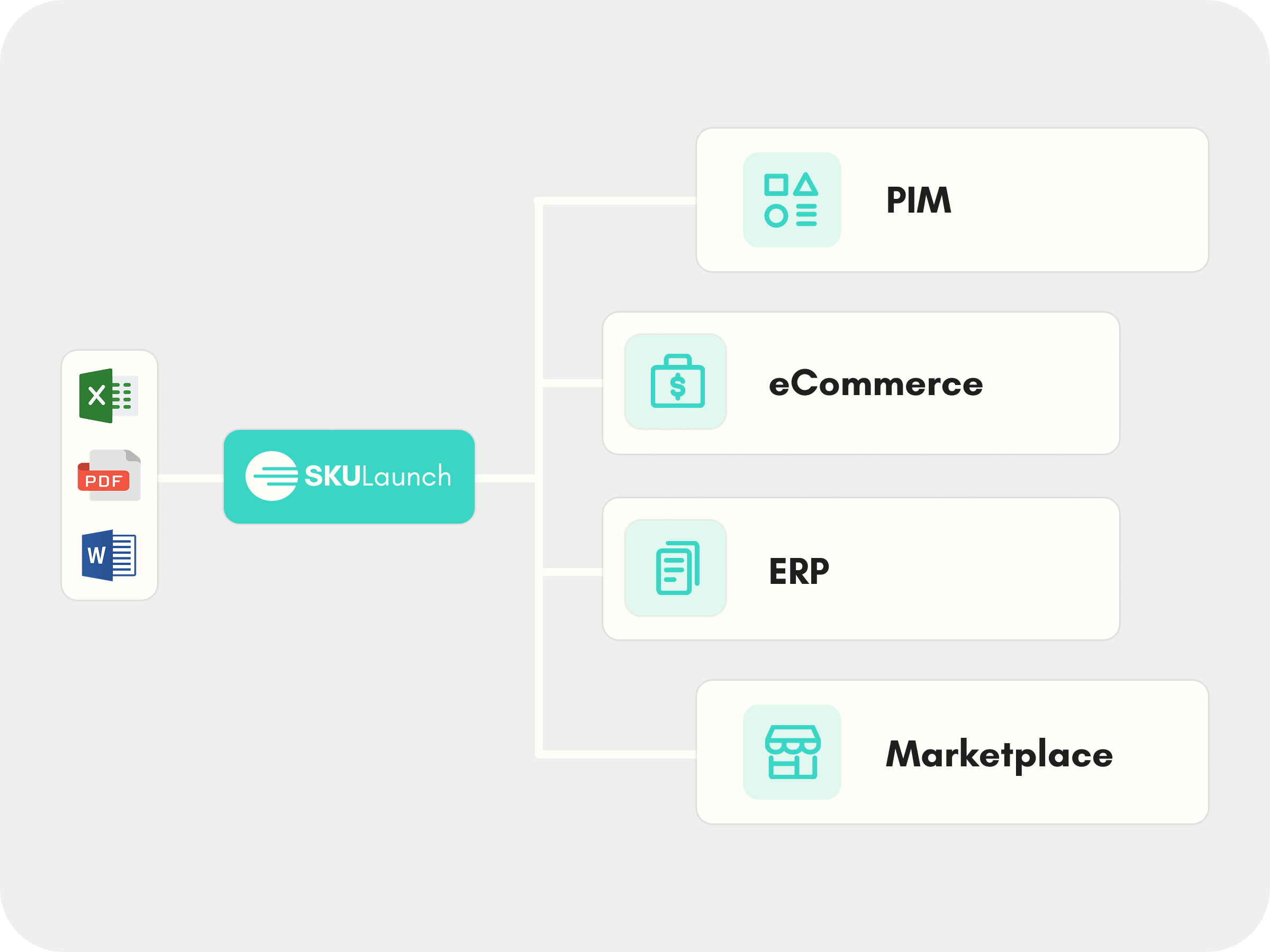How to validate supplier data using SKULaunch
Launching new products is meant to be a time of opportunity, but it can quickly turn into a worrisome experience if your product data isn’t up to scratch. Today’s hyper-competitive eCommerce, D2C, and B2B landscape means getting new products online quickly, accurately, and preferably before your rivals, is a crucial success factor. However, there’s a common bottleneck which often ends up slowing down this process – the integration of supplier product data.
We understand that managing and integrating supplier data can be a complex and time-consuming affair. In our article, we highlight three common mistakes which businesses make when they go about validating this critical information. We also provide pointers on how you can avoid these pitfalls so you can ensure your product launches are smooth, fast, and trouble-free.
Chellenges when validating supplier data
Not addressing the latent chaos around supplier data formats
One of the first hurdles in the race to integrate supplier data is the sheer variety of formats it comes in. Suppliers frequently provide product information in a range of formats – it could range from simple spreadsheets and CSV files to more complex XML or even proprietary formats. In any case, having to manually wrangle this “data chaos” is not only an inefficient way of deploying valuable employee time, but is also likely to spawn a whole load of errors which, sooner or later, are going to cause you headaches.
Overlooking the importance of data quality checks
Simply receiving product data on trust from a supplier isn’t enough, regardless of how reliable they may be. It’s a fundamental of digital commerce that the data is accurate, complete, and meets your specific standards. A failure to implement robust data quality checks is a recipe for substandard CX, lost sales, returns and poor searchability.
Think about the impact of missing product descriptions, incorrect dimensions, or inconsistent units of measure. Customers rely on this information to make informed purchasing decisions. If your data is flawed, it leads to returns, negative reviews, and a poor overall CX.
Poor communication with suppliers
Effective communication is a key part of the product data onboarding process. When problems emerge with supplier data – and they often do – the absence of clear and efficient communication causes significant delays in dealing with these problems.
For instance, if you spend excessive time trying to chase down suppliers for missing information, or clarification on a specific product attribute, this back-and-forth can be cumbersome and costly in terms of the knock-on impact on your Time-to-Market.
How SKULaunch solves these challenges
At SKULauch, we understand exactly what pain points businesses have while onboarding and validating supplier product data. That’s why we developed our AI-powered product data onboarding platform – precisely to address the three key mistakes we’ve discussed.
Dealing with product data chaos
SKULaunch can ingest data in various formats, simplifying the initial integration process.
Guaranteeing data quality
Our platform automates data quality checks so you can be sure of the accuracy and completeness of your product information.
Improving communication
SKULaunch make smoother communication with supplier much easier, so you can resolve any data issues rapidly and efficiently.
What’s more, for businesses that need extra support, our optional SKUConcierge service offers a managed solution for comprehensive data handling, from sourcing to standardisation. This can be a commercial life-saver for those businesses which may lack the resources or expertise to manage this process internally.
Our validation processes
To give you a more rounded view of our services, here’s a quick run-down of the process:

1
Identifying missing product information
Before sourcing missing data, SKULaunch first assesses what’s missing and prioritises the gaps, based on their importance. This could include:
- Technical specs (dimensions, weight, materials…)
- Compliance details (certifications, regulatory requirements…)
- Marketing content (product descriptions, feature highlights…)
- Digital assets (high-quality images, instruction manuals…)
Reliable sources for missing product data
2
SKULaunch then sources missing product information from a combination of trusted and verified sources to guarantee accuracy. These include:
- Industry and regulatory databases
- Trusted third-party data providers
- Web scraping[1] and AI-Based data extraction
2



Continuous monitoring and real-time updates
3
To be clear, validating supplier data is not a one-time process. Product information change frequently, so ongoing monitoring and updating is a must. Businesses using SKULaunch never have to manually chase suppliers for the latest data because it continuously verifies and updates that information.
Ready to Fix Supplier Data Bottlenecks?
Retailers, distributors, and manufacturers can stop spending valuable time firefighting product data issues and focus on selling more products with confidence, because knowledge their product listings will always be 100% accurate. Do you need better supplier data? Book your demo today and see how SKULaunch flexes its muscles to do the heavy lifting for you.
